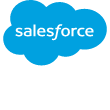Implementing Quote-to-Cash for Broadband Internet Providers with Salesforce and Nextian

Broadband Internet is the most popular form of Internet access in the US with approximately 60% of the residential market share.
It is also gaining popularity for business customers, especially as a secondary/backup link, particularly in conjunction with new technologies like SD-WAN.
Broadband internet offers high speed data transfers at low cost and is provided using various technologies including DSL (Digital Subscriber Line), cable and lately, fiber-optic and wireless.
While the underlying access technologies have been around for a while and do not pose major problems, service providers are facing back-office and B/OSS challenges including:
- Limited ability to quickly generate customer quotes with confirmed service locations
- Quoting limited to presenting new products only and not capable of handling changes to existing subscriptions (changes, add-ons, upgrades, replacements, etc.)
- Expensive and feature-lacking multi-channel customer self-service with quoting, orders status, service management, ticketing and bill pay
- Long product rollout cycles
This post describes how Nextian can help Broadband Internet Providers with overcoming these challenges using Salesforce as a platform.
The traditional quote-to-cash (QTC or Q2C) model
Before diving into new approaches to QTC, let’s take a look at the traditional model employed by service providers:
CRM ←→ CPQ → Order Processing → Billing → ERP/Financial
Let’s take a look at what happens between CRM opportunity and customer bill:
|
This model has a number of limitations:
- The product catalog has to be replicated in multiple systems which causes synchronization challenges.
- There are multiple integration points and bottlenecks (e.g., revenue forecasting requires updating opportunity with the latest quote numbers) and integrations are expensive to build, maintain and are error-prone.
- Enabling e-commerce and customer self-care requires integration of data from multiple systems inflating development and maintenance costs.
- Slow product rollout (from conception to when a can be quoted, delivered & billed) due to multiple systems involved.
- Limited cross-departmental information access — for example. account managers are not able to see delivery progress, as they usually work within the CRM without access to delivery/project management systems. This leads to a considerable communication overhead within the business.
These limitations cause problems for the business
|
Improving the traditional model
Generally, service providers try to mitigate these limitations using two methods: systems integration and in-house development:
| Method | Pros | Cons |
|---|---|---|
| Systems Integration (SI) — use commercial off-the-shelf packages and integrate them either via an ESB (Kafka, Apache MQ) or other SI method. | Standard software packages used — maintenance is vendors’ responsibility, no cost of software development and testing. | A substantial cost of building and maintenance (systems upgrades, APIs and data format changes, etc.) Many integration projects fail. Lack of desired functionality in the commercial off-the-shelf packages. |
| In-House Development — use own development team to build required systems in-house. | No integration required. Tailored features meeting business requirements. |
Substantial cost of in-house development & testing, long delivery cycles, costly maintenance — sustainable only for large providers. |
Most providers use a combination of these two methods.
A different approach — Lead-To-Cash
Lead-to-cash is, in essence, a quote-to-cash model where CRM plays the central role (hence the ‘lead’ in the name) and other systems are built around it
Salesforce is well positioned for lead-to-cash implementations:
- It is an extremely flexible and customizable system, which is also a programming platform (custom objects, APEX, Lightning, etc.)
- It has a rich ecosystem of apps both from Salesforce and 3rd party vendors (such as Nextian) spanning the entire QTC continuum
The following sections describe some aspects how Salesforce can support QTC for Broadband providers.
Support for residential customers
Historically, CRMs have been used for B2B sales and while Salesforce is primarily a B2B product, it is also capable of handling residential accounts via a ‘Person Account’ type. By default, ‘Person’ accounts are disabled and have to be enabled by the Salesforce support. Once enabled, Salesforce is perfectly capable of handling residential services.
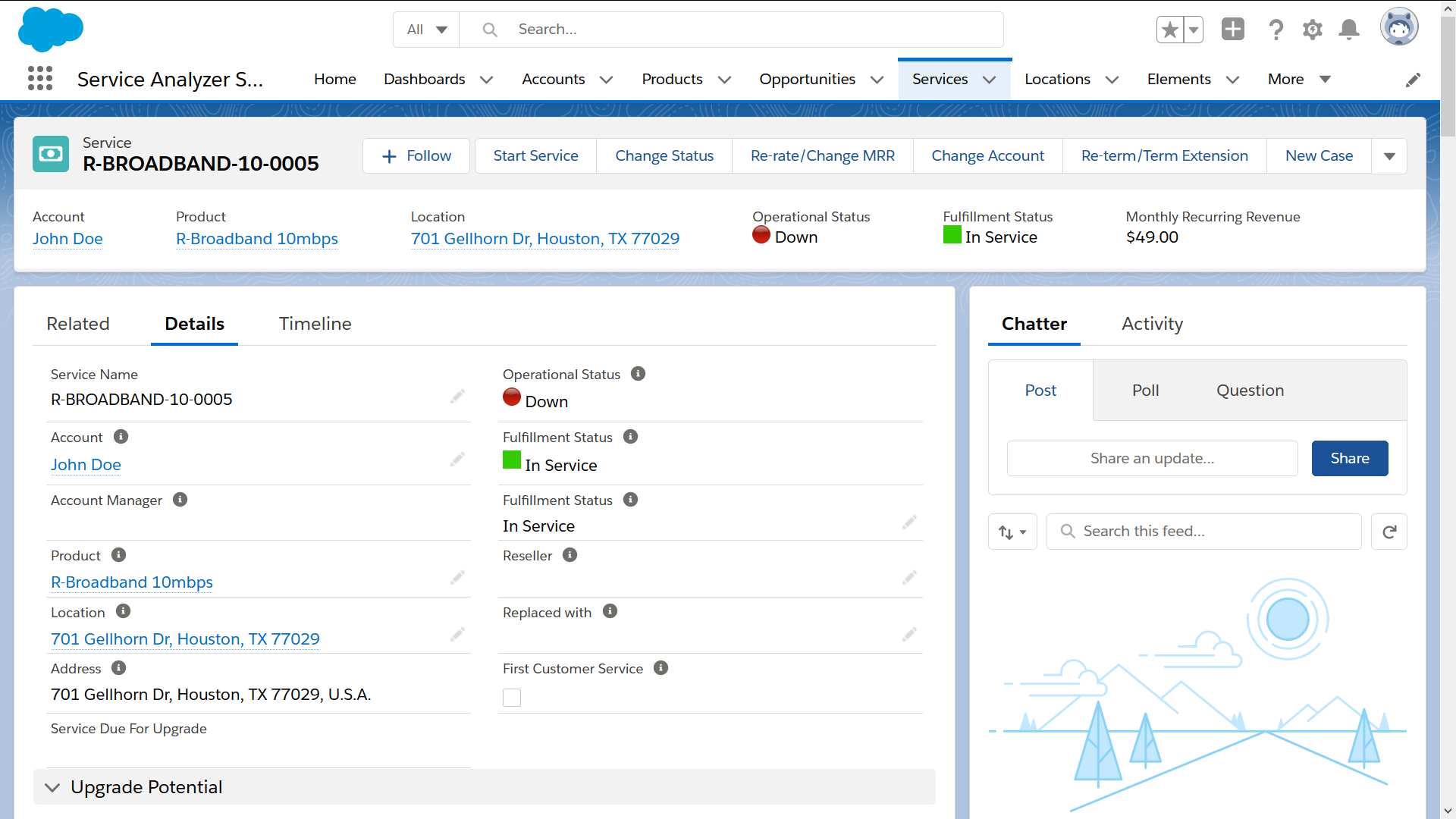
Quoting/CPQ
One of the strong suits of Salesforce is CPQ — both their own CPQ as well as third party packages available on AppExchange.
As mentioned earlier, one of the key challenges with subscription quoting is the ability to handle re-terms, re-rates, upgrades, moving services across locations or even replacing them. This is not possible in the CPQ engine without access to the service inventory.
For example, Nextian builds on top of service inventory and vanilla Salesforce CRM to enable quoting of all operations available during subscription life cycle.
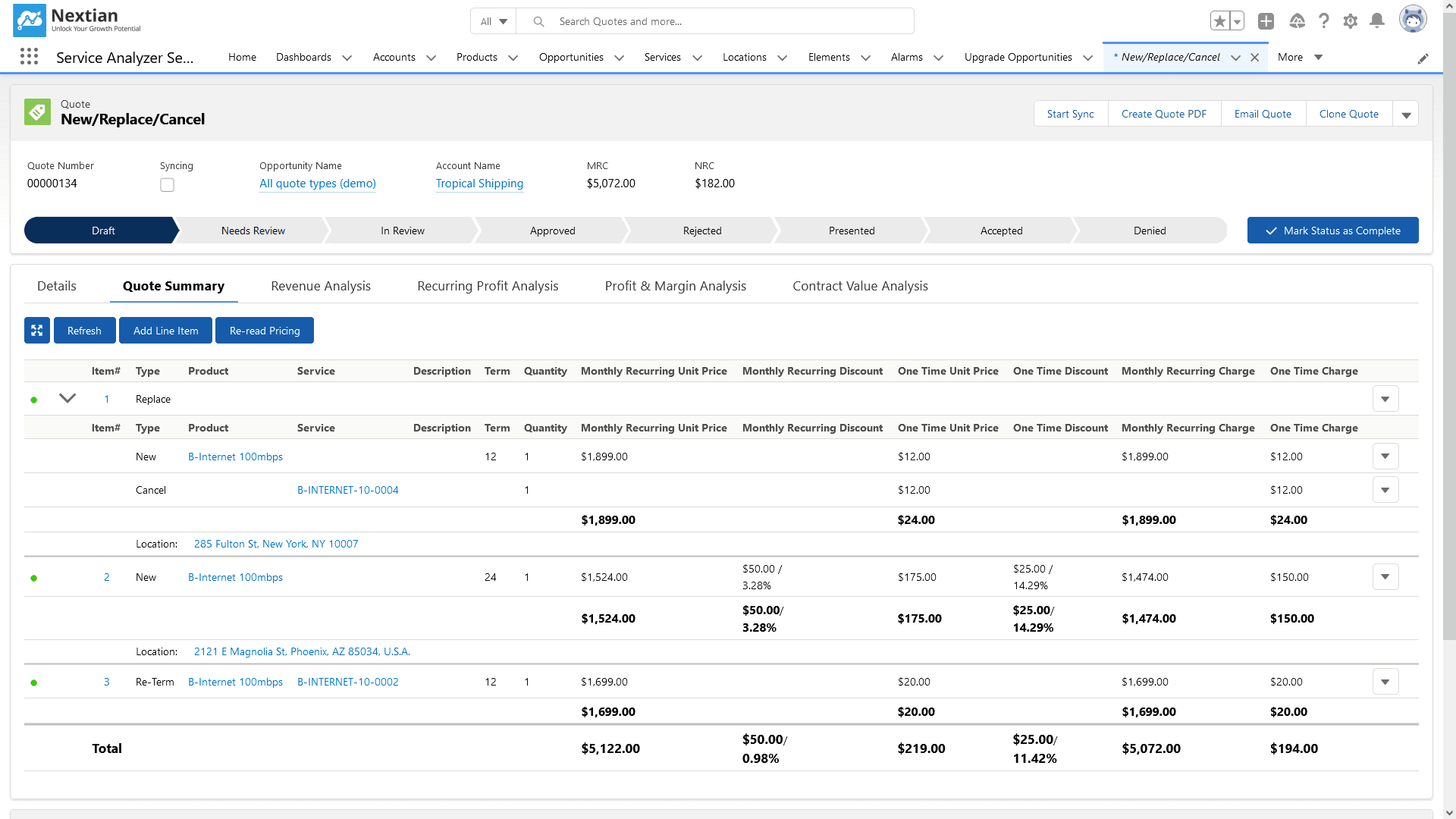
In addition, Nextian also supports handling of service requests (e.g., perform a security audit on my subscription) as well as traditional ‘widget’ sales.
Subscription service inventory and life-cycle management
Unfortunately, Salesforce does not have a built-in ‘service’ object for representing cloud and communications customer subscriptions/services such as virtual machines, internet access, cloud backups, etc. (the contract object is a good basis for representing user agreements and T&Cs, but not individual services/subscriptions — see notes on contract management below).
Fortunately, service object can be built as a custom object — in fact, this is one of the few custom objects added by Nextian.
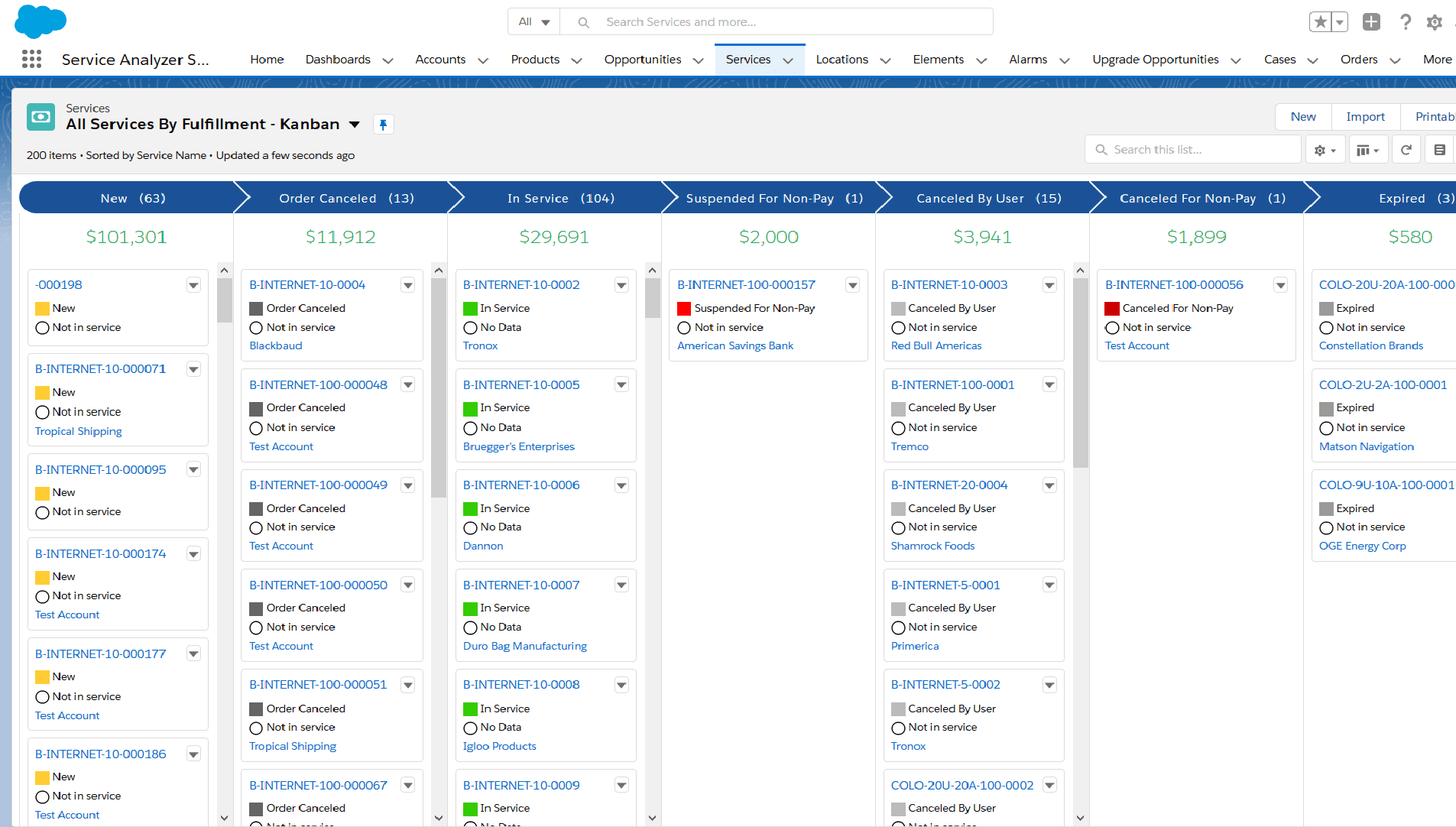
Delivery and provisioning
Salesforce offers multiple options for order delivery implementation: form simple tasks through process builder, work orders all the way up to complex third-party project management packages available form AppExchange.
Nextian implements work orders that are coupled with CPQ (each product definition contains work order definition for delivery) and order processing (work orders are created for order line items based on product definitions).
In addition to advanced scheduling and forecasting for manually executed tasks, Nextian offers code tasks for automating the provisioning process with zero-touch-provisioning as the ultimate goal. Technically, code tasks are APEX code snippets that can reach out via REST or other APIs & protocols to other systems — it is up to a workflow designer to determine if provisioning orchestration takes place in Salesforce or elsewhere.
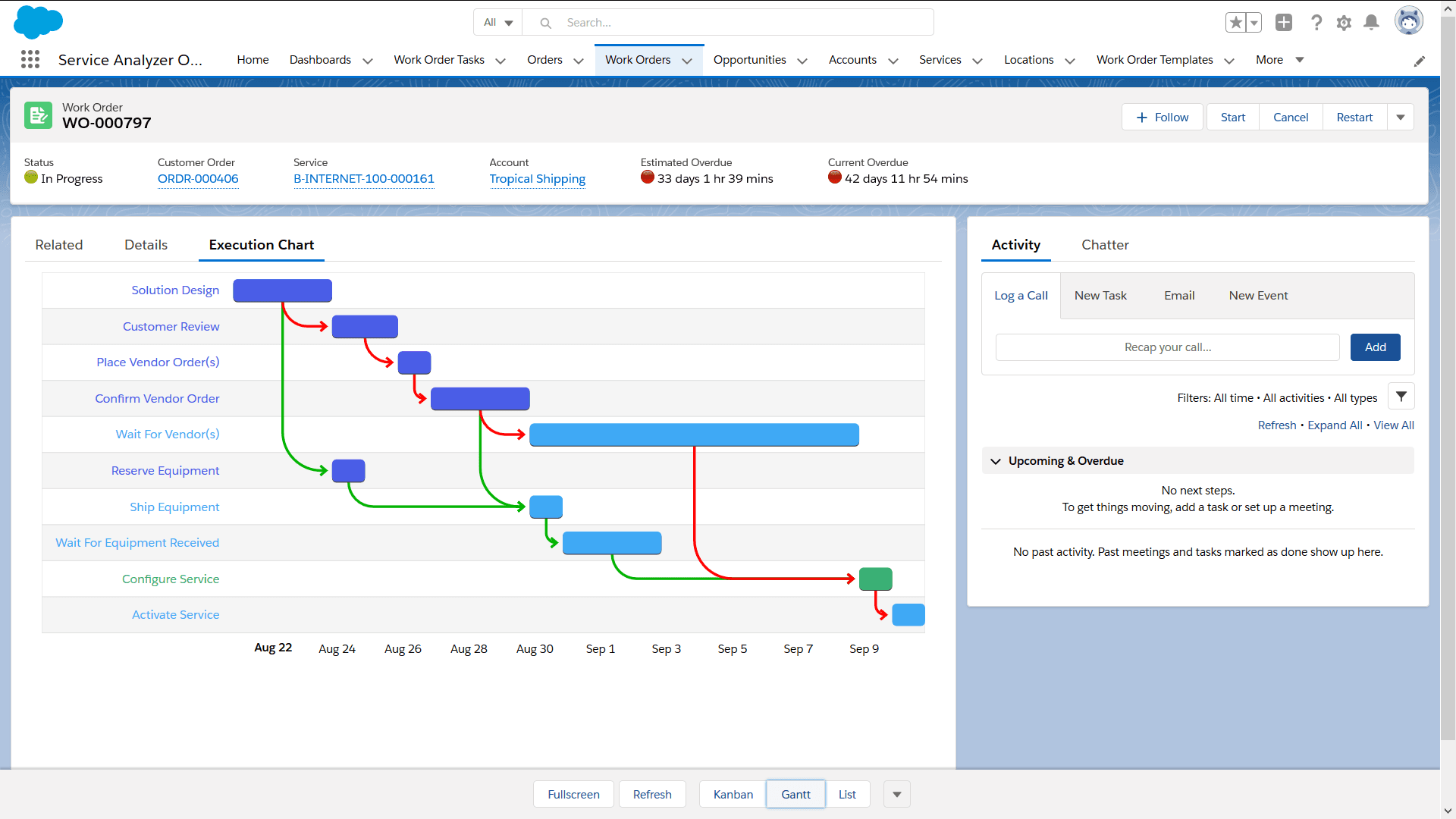
Customer support
Customer support in Salesforce is based on built-in case objects, which can be used as trouble tickets. Just like with the CPQ, many implementation options are available to make cases usable for cloud and communications services support:
- Customize, vanilla case objects
- Use Service Cloud cases (these offer a lot of additional functionality like SLAs, Entitlements, Chatter, etc.)
- Use a third-party package from AppExchange
Nextian uses the first approach, adding service and account context (service, product, location, account, revenue & profit, etc.). to either vanilla CRM or Service Cloud cases.
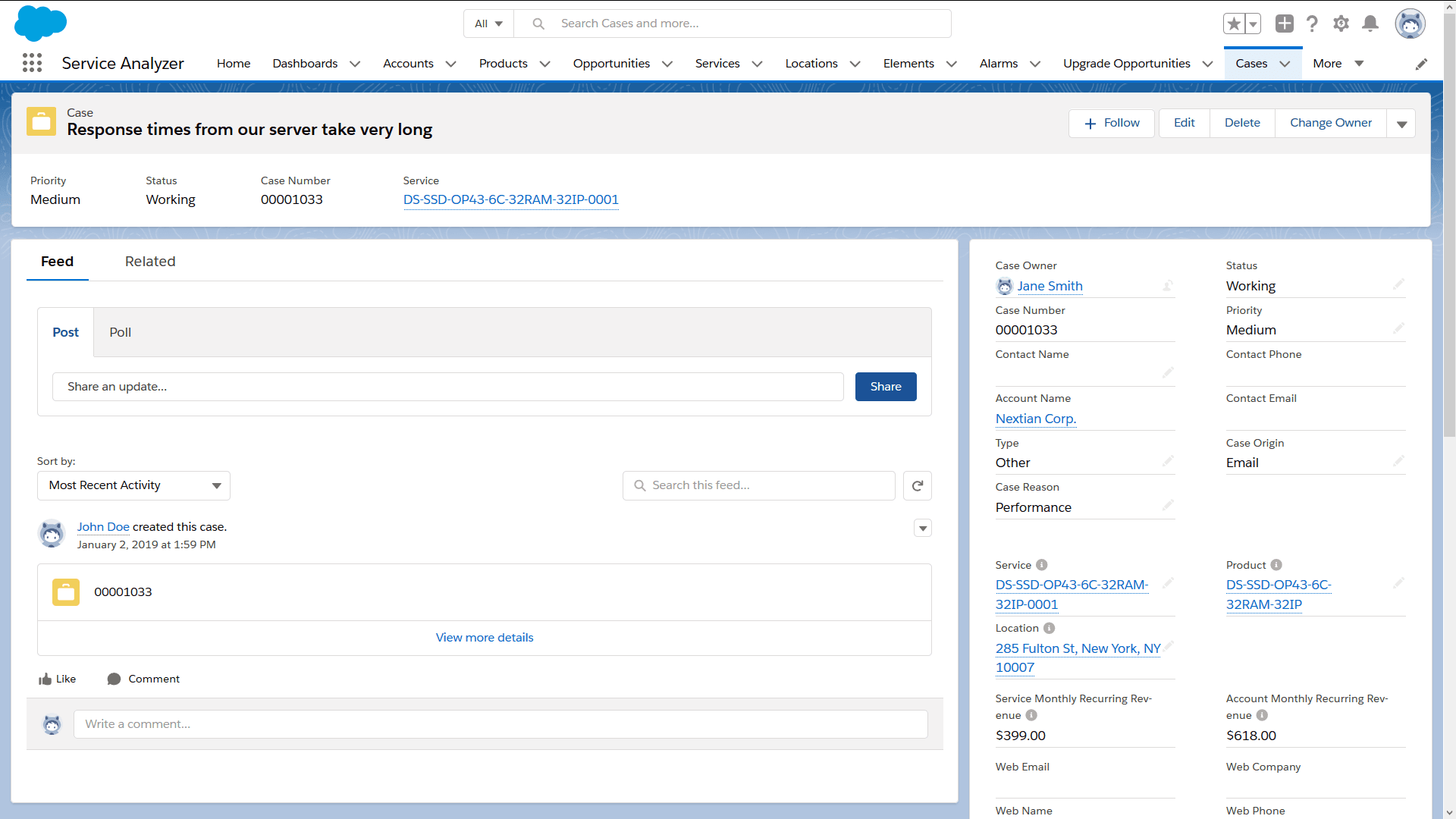
Billing & finance
At Nextian we recommend keeping billing / finance outside Salesforce (this seems to be a common practice for the industry).
This especially holds true when voice bundles come into the mix, with usage-based billing, CDR (Call Data Record) processing, etc.
E-commerce / Self-care portals
Generally, the following approaches are possible:
- Keep the portal outside (but integrated with) Salesforce on one hand, and Billing & Finance on the other
- Pull all the required information into either system and create a single portal integration
- If all data is pulled into Salesforce, using Salesforce Communities is an option
Customer portal architecture is typically determined on an individual case basis.
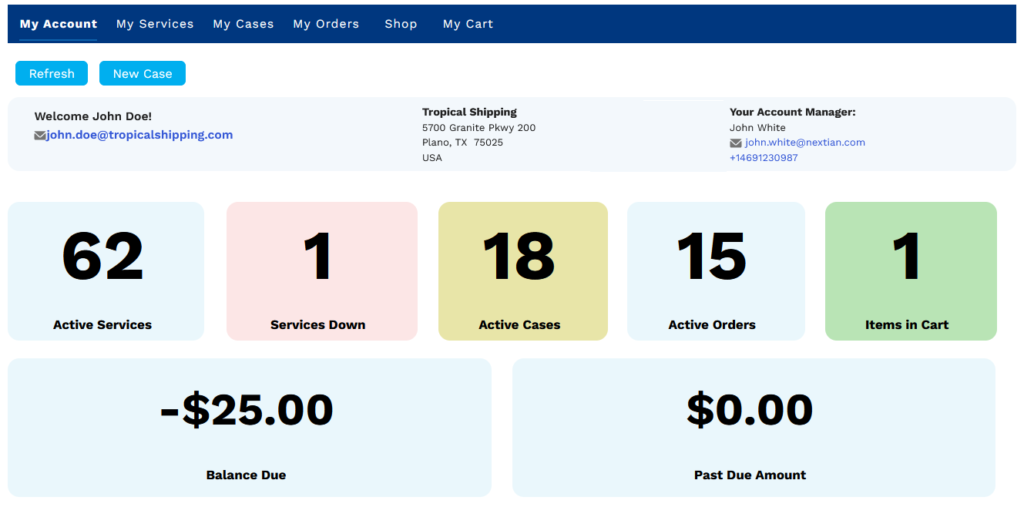
Contract management
Salesforce offers a standard contract object that can be further customized. At Nextian, we recommend customizing it on a per case basis (it is not, for example part of the Nextian package), because it is difficult to generalize. The following need to be considered:
- Standard terms & conditions vs. special contracts
- One-off terms
- Single contract per account or multiple contracts (e.g., per product)
- Handling of account mergers
Taking it further — network integration and upgrades
So far, only the BSS part of B/OSS has been discussed. It is however worth noting, that bringing service information from the network into the CRM can greatly improve account management, sales and increase user experience. For example, Nextian brings availability, operational status, outage and upgrade information directly into the CRM:
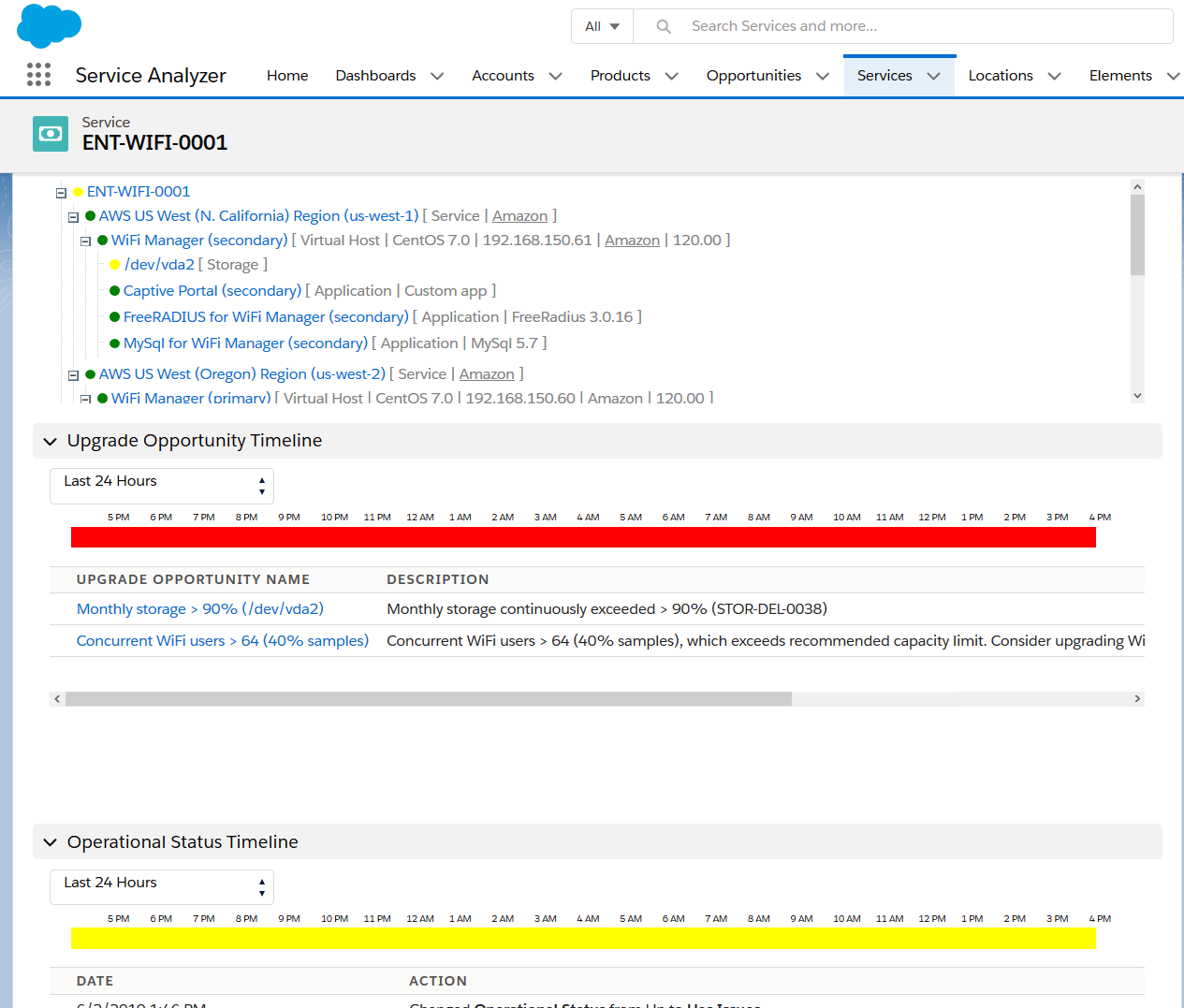
Conclusions
Salesforce is an excellent ecosystem for end-to-end business management for cloud and communications service providers, offering:
- Reduced TCO
- Consolidated platform/fewer integrations
- Ecosystem spanning the entire quote-to-cash continuum
- Reduced CAPEX
- Rapid development/smaller expense per feature
- Ability to leverage a versatile ecosystem
- Quicker time-to-market
- Rapid deployment of new products
- Improved user experience
- 360° view of the customer in the CRM (services, revenue, case, payments, operational status, etc.)
- Relatively easy to implement multi-channel user support & self-care
Nextian is a vendor of Quote-to-Cash (QTC) software for cloud and communications helping providers accelerate growth and increase customer lifetime value.
Contact us today to find out how we can help you!
Related posts
2024 telecommunications industry trends in Quote-to-Cash
Learn about 2024 telecommunications industry trends: shift towards software, digital experience, automation, API-fication and AI & algorithms.
Taking telco service delivery to the next level
Take your telco service delivery to the next level with task automation, intelligent task assignments, automated scheduling and forecasting and others.
Increasing sales velocity for cloud & communications services
Increase sales velocity of cloud and communications services and quickly generate revenue with rapid quoting, automated renewals and omni-channel sales.
GET THE NEXTIAN ADVANTAGE
We help enterprises increase revenue, profitability and gain efficiencies by realizing the full potential of the Salesforce platform.

